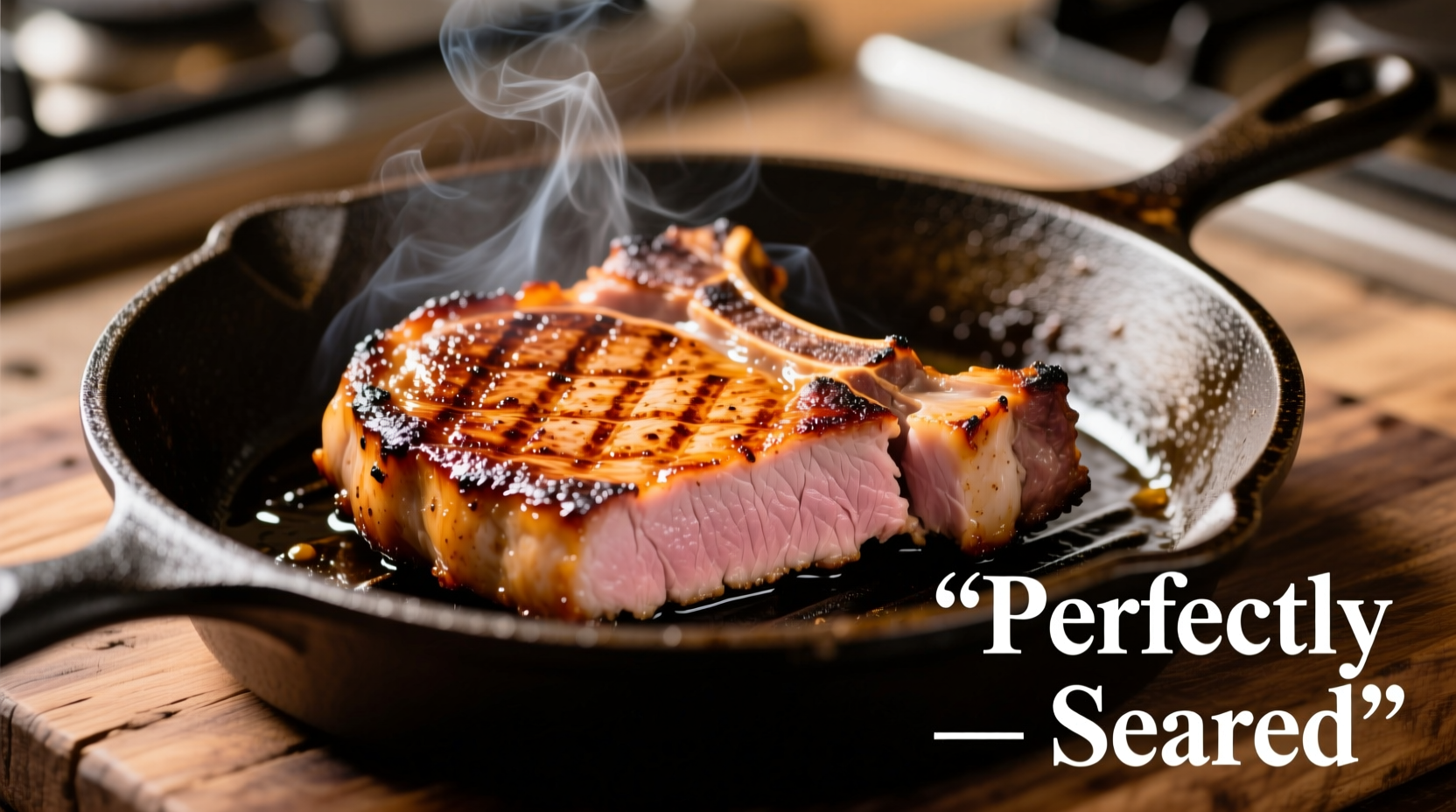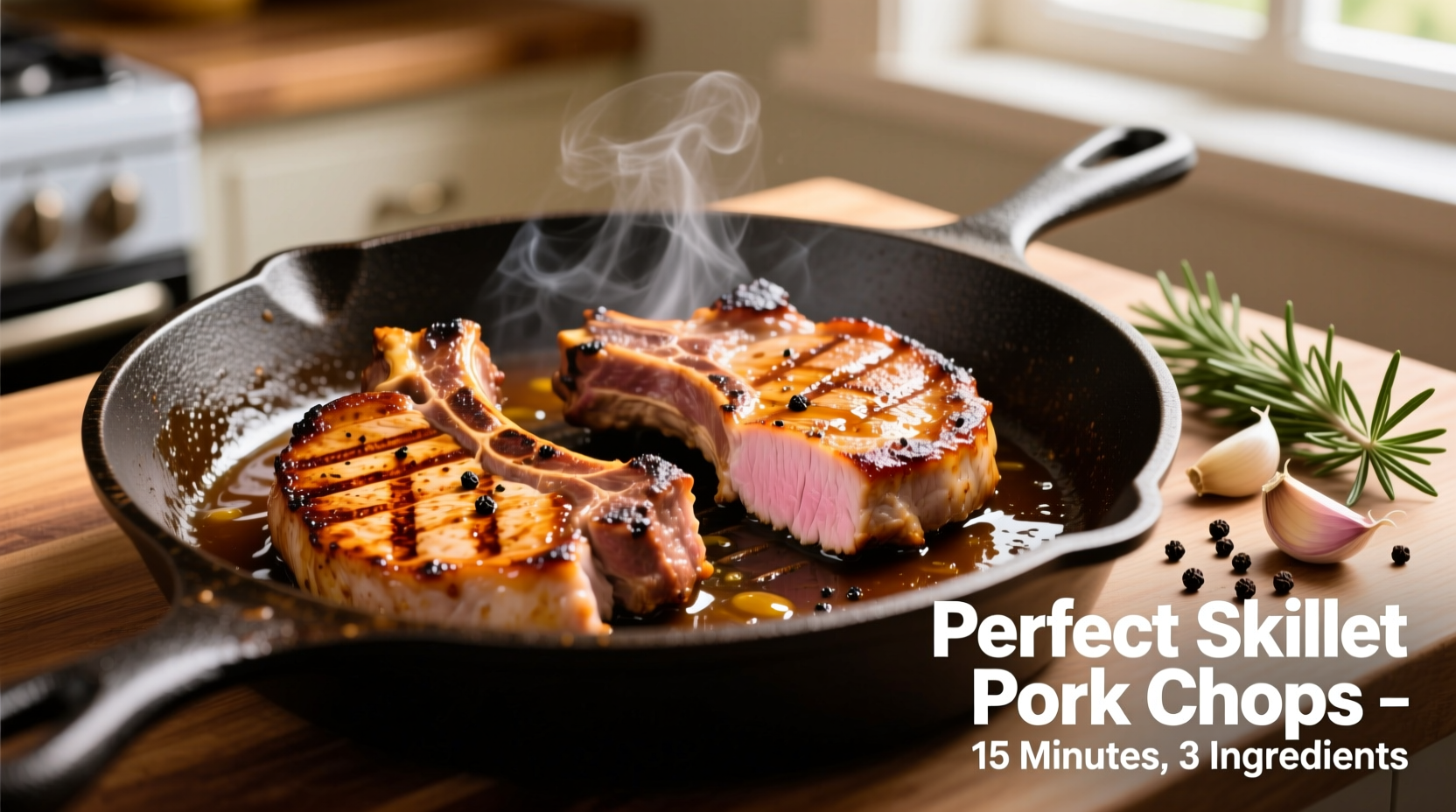Nothing beats the sizzle of pork chops hitting a hot skillet—the aroma fills your kitchen and promises a delicious meal. As a home cook, you've probably struggled with dry, overcooked pork chops or uneven browning. The good news is that perfect skillet pork chops are achievable with the right technique, timing, and temperature control. In this guide, you'll learn exactly how to cook pork chops in a skillet that stay juicy, develop a beautiful crust, and deliver restaurant-quality results every time.
Why Skillet Cooking Works Best for Pork Chops
Skillet cooking provides direct, consistent heat that creates the perfect Maillard reaction—the chemical process that gives seared meat its rich, complex flavor and appealing brown crust. Unlike baking or grilling, skillet cooking gives you precise control over the cooking process, allowing you to adjust heat instantly and monitor the chops closely. According to the USDA Food Safety and Inspection Service, pork should reach an internal temperature of 145°F with a 3-minute rest for safe consumption, which is perfectly achievable with skillet cooking.
Essential Tools and Ingredients
Before you start cooking pork chops in skillet, gather these essentials:
- Cast iron or heavy-bottomed skillet (provides even heat distribution)
- Instant-read thermometer (critical for perfect doneness)
- High smoke-point oil (avocado, canola, or grapeseed oil)
- Quality pork chops (1-1.5 inches thick for best results)
- Salt and pepper (plus optional herbs and spices)
Selecting the Right Pork Chops for Skillet Cooking
Not all pork chops are created equal when it comes to skillet cooking. The cut and thickness dramatically affect cooking time and final texture. Here's a quick reference guide for different pork chop types:
| Pork Chop Type | Thickness | Cooking Time | Flavor Profile |
|---|---|---|---|
| Bone-in Rib Chop | 1-1.5 inches | 4-5 min/side | Richest flavor, most forgiving |
| Boneless Loin Chop | ¾-1 inch | 3-4 min/side | Milder flavor, cooks faster |
| Frenched Chop | 1.5+ inches | 5-6 min/side + oven finish | Elegant presentation, requires finishing |
| Center Cut Chop | ¾ inch | 2-3 min/side | Everyday cooking, less forgiving |
According to the National Pork Board, bone-in chops typically retain more moisture during cooking, making them more forgiving for beginners learning how to cook pork chops in skillet. Look for chops with even pink color and moderate marbling for best results.
Step-by-Step Guide: How to Cook Pork Chops in Skillet
Preparation: Setting Up for Success
Remove pork chops from refrigerator 30-60 minutes before cooking. This critical step ensures even cooking—chops that go into the skillet cold will cook unevenly, with the exterior overcooking before the interior reaches proper temperature. Pat chops thoroughly dry with paper towels; moisture is the enemy of proper searing. Season generously with salt and pepper on both sides (and any additional spices you prefer).

The Cooking Process: Timing is Everything
Follow this precise cooking timeline for perfect results every time:
- Preheat skillet over medium-high heat for 3-5 minutes until very hot
- Add oil (1-2 tablespoons) and wait until shimmering but not smoking
- Place chops in skillet, leaving space between them
- Sear first side for 3-4 minutes without moving (until golden brown crust forms)
- Flip chops and sear second side for 3-4 minutes
- Check temperature—remove when internal temperature reaches 140°F
- Rest chops for 5 minutes before serving (temperature will rise to 145°F)
This cooking timeline is crucial when learning how to cook pork chops in skillet properly. Moving the chops too soon prevents proper crust formation, while flipping too often interrupts the searing process. The National Center for Biotechnology Information confirms that resting meat after cooking allows juices to redistribute, resulting in significantly juicier meat.
Troubleshooting Common Skillet Pork Chop Problems
Dry or Overcooked Pork Chops
This is the most common issue when cooking pork chops in skillet. The solution? Use a thermometer and remove chops at 140°F, not 145°F. The residual heat will continue cooking them to the safe 145°F during resting. Overcooking by just 5°F can reduce juiciness by up to 40%, according to culinary research from the Culinary Institute of America.
Chops Sticking to the Skillet
If your pork chops stick when you try to flip them, they're not ready to release. Wait another 30-60 seconds—the natural non-stick properties will develop as the proteins fully sear. Ensure your skillet is properly preheated and the chops are thoroughly dry before cooking.
Uneven Browning
Uneven heat distribution in your skillet causes this problem. Use a heavy-bottomed cast iron or stainless steel skillet for most consistent results. Avoid overcrowding the pan, as this lowers the temperature and creates steam instead of sear.
Flavor Variations and Pro Tips
Once you've mastered the basic technique for how to cook pork chops in skillet, experiment with these flavor enhancements:
- Herb butter finish: During the last minute of cooking, add 2 tablespoons butter, 2 garlic cloves, and fresh thyme or rosemary to the skillet. Tilt pan and spoon melted butter over chops.
- Simple pan sauce: After removing chops, deglaze skillet with ½ cup chicken broth, scraping up browned bits. Add 2 tablespoons Dijon mustard and reduce by half.
- Dry brine: For extra juicy results, salt chops 12-24 hours before cooking and refrigerate uncovered.
Remember that skillet cooking works best for pork chops between ¾ and 1.5 inches thick. For thicker cuts, consider starting in the skillet then finishing in a 375°F oven to ensure even cooking without over-browning the exterior—a technique professional chefs use when cooking pork chops in skillet for restaurant service.
Serving Suggestions for Perfect Skillet Pork Chops
Serve your perfectly cooked pork chops with complementary sides that balance the rich flavor. Classic pairings include:
- Garlic mashed potatoes with roasted garlic
- Sautéed green beans with lemon zest
- Apple sauce or cranberry relish for sweetness
- Simple arugula salad with balsamic vinaigrette
The acid in sides like apple sauce or salad helps cut through the richness of the pork, creating a more balanced meal—this is why traditional recipes for how to cook pork chops in skillet often include fruit-based accompaniments.
Storing and Reheating Leftovers
Store leftover pork chops in an airtight container in the refrigerator for up to 3-4 days. To reheat without drying out:
- Low-temperature oven method: Wrap in foil and heat at 275°F until internal temperature reaches 130°F
- Skillet method: Add 1 tablespoon broth or water to skillet, cover, and heat over low for 3-4 minutes
Avoid microwaving, which often results in rubbery texture. Properly stored and reheated leftovers maintain much of their original quality when you've mastered how to cook pork chops in skillet correctly the first time.











 浙公网安备
33010002000092号
浙公网安备
33010002000092号 浙B2-20120091-4
浙B2-20120091-4